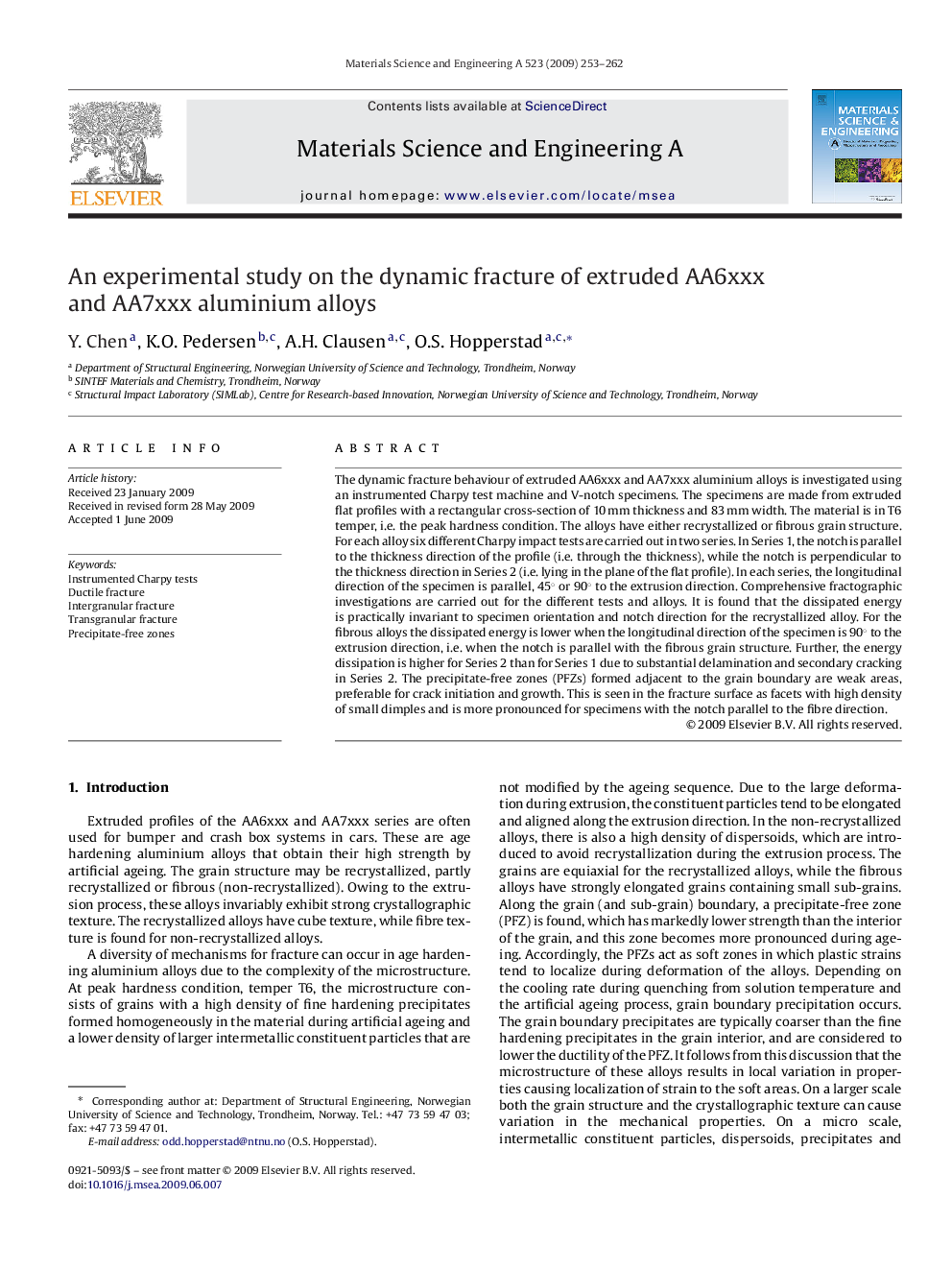| Article ID | Journal | Published Year | Pages | File Type |
|---|---|---|---|---|
| 1580011 | Materials Science and Engineering: A | 2009 | 10 Pages |
The dynamic fracture behaviour of extruded AA6xxx and AA7xxx aluminium alloys is investigated using an instrumented Charpy test machine and V-notch specimens. The specimens are made from extruded flat profiles with a rectangular cross-section of 10 mm thickness and 83 mm width. The material is in T6 temper, i.e. the peak hardness condition. The alloys have either recrystallized or fibrous grain structure. For each alloy six different Charpy impact tests are carried out in two series. In Series 1, the notch is parallel to the thickness direction of the profile (i.e. through the thickness), while the notch is perpendicular to the thickness direction in Series 2 (i.e. lying in the plane of the flat profile). In each series, the longitudinal direction of the specimen is parallel, 45° or 90° to the extrusion direction. Comprehensive fractographic investigations are carried out for the different tests and alloys. It is found that the dissipated energy is practically invariant to specimen orientation and notch direction for the recrystallized alloy. For the fibrous alloys the dissipated energy is lower when the longitudinal direction of the specimen is 90° to the extrusion direction, i.e. when the notch is parallel with the fibrous grain structure. Further, the energy dissipation is higher for Series 2 than for Series 1 due to substantial delamination and secondary cracking in Series 2. The precipitate-free zones (PFZs) formed adjacent to the grain boundary are weak areas, preferable for crack initiation and growth. This is seen in the fracture surface as facets with high density of small dimples and is more pronounced for specimens with the notch parallel to the fibre direction.
